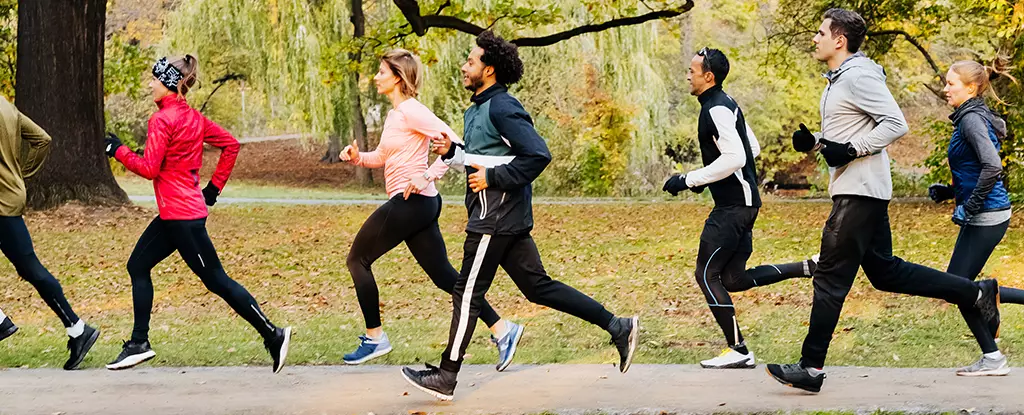In the world of running, speed is often seen as the ultimate goal. Whether you’re an amateur or a professional, the desire to constantly improve and achieve faster times is a common drive among avid runners. However, a new trend has emerged in recent years that challenges this notion – the concept of “slow running”. Slow running advocates argue that anyone can run, regardless of their speed or ability. This approach promises not only physical health benefits but also increased enjoyment of the sport.
Research supports the claims of slow running enthusiasts, suggesting that running at lower intensities may be more beneficial in certain ways compared to high-intensity training. Elite runners such as Eliud Kipchoge and Kelvin Kiptum spend approximately 80 percent of their training time at a slower pace known as zone 2 running. This pace raises the heart rate but still allows for conversation. Only about 20 percent of their training is done at higher intensities, closer to their race pace.
The reason behind this approach is the impact of training stress on the body. As running speed increases, so does the strain on the body, raising the risk of illness, infection, and injury. By reducing the amount of time spent at higher intensities, athletes decrease their chances of missing out on training due to these setbacks.
One fundamental aspect of training is developing a strong foundation, often referred to as “base”. This term describes the baseline cardio-respiratory fitness needed for all training adaptations. Similar to a pyramid, a bigger base allows for more significant growth and improvements. Slow running helps build this base, as it places relatively low physiological stress on the body.
During zone 2 running, the heart is not under significant stress. However, the amount of oxygenated blood leaving the heart per beat is close to its maximum capacity. This is crucial because while the heart’s pumping capacity adjusts to training, higher intensities do not further increase this gain. Developing a strong base enables more oxygen to be delivered to the working muscles per heartbeat, contributing to running success.
Efficient Energy Burning
Another advantage of slow running is its reliance on stored fat for energy rather than carbohydrates. Burning fat is a more efficient metabolic process, as a single molecule of fat provides more energy than a molecule of carbohydrate. Consequently, runners who predominantly rely on fat stores use less energy overall, which reduces fatigue and improves race day performance.
Studies have shown that athletes who allocate more time to slow running experience approximately 1 percent greater gains in VO2 max (oxygen capacity) and race speed. Additionally, slow runners witness around five times greater improvements in their aerobic base compared to those who focus more on high-intensity runs. Even non-athletes can benefit from incorporating slow running into their routines.
If you’re curious about embracing slow running, determining the correct pace is essential. Physiologically, zone 2 is defined as running below the lactate threshold, the point at which lactate appears in the blood. To be in zone 2, you should run at a speed where holding a conversation is possible and your heart rate stays around 70 percent of your maximum.
An alternative method, known as the talk test, can be used if you’re running alone. If you can sing out loud without struggling to catch your breath, you’re in the right zone. However, if you find it challenging to maintain a conversation or start to feel heavy-legged, your intensity is too high, and you should slow down.
Slow running offers numerous benefits for both physical health and mental well-being. Whether you’re an experienced runner or a beginner, embracing a slower pace can enhance your enjoyment of the sport while still fostering significant improvements. So, don’t shy away from your slow running pace – put on your trainers and give running a try. You may be pleasantly surprised by the positive impact it has on your overall running experience.


Leave a Reply